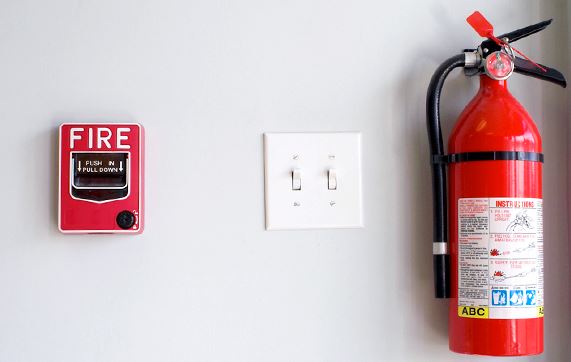When designing and planning a property development project, it is essential to consider the legal health and safety requirements.
The government outlines many clauses that are specifically related to fire safety. Following the correct framework of regulations is pivotal when protecting future tenants or occupiers and neighbouring properties from fire risks.
From the initial construction blueprints to the final fittings and fixtures, here are the things property developers must keep in mind throughout the course of a development project.
Working with the correct materials
It is essential to assess the internal and external structure of a property, in order to gauge its ability to resist and control the rapid spread of smoke and fire.
Fires do not usually start in two different places within a property, so being able to contain a fire to its starting point increases safety measures.
The choice of particular materials for lining partitions, walls, ceilings and other internal parts of a property’s structure can significantly affect the spread and growth of a fire. Choosing unsuitable materials may prevent occupants from escaping from the property in the case of a fire; therefore, property developers must use materials that are proven to:
- Efficiently resist the spread of flame over their surfaces;
- If ignited, have a rate of heat release or rate of fire growth that is adequately low within the circumstances.
Protecting a property’s structure
As well as safeguarding the internal structure of a property, the overall structure must also be protected. The method of compartmentation is designed to divide the property into separate ‘cells’ using suitable construction materials that help to prevent the passage of fire by walls and the roof. This ensures that the property’s structure does not easily collapse during a fire and that any neighbouring buildings, apartments or shops are not affected by the fire.
Fire-doors and walls are the most common forms of compartmentation, which are essential in commercial buildings and apartment blocks, to prevent the passage of fire into a stairwell. Occupiers need to be able to safely exit a property in the case of a fire, so mapping out and protecting the exit route during the development of a building is pivotal.
Cavity barriers are another form of fire separation – these are necessary in vulnerable, out-of-sight places (like some concealed floor spaces, roof spaces and ceilings), to prevent the spread of smoke and fire from going unnoticed.
Fitting alarms and fixtures
Once a property has been built, there are numerous fire safety fixtures you can fit. Legally, you will need to make sure that there is:
- A smoke alarm on every storey;
- A carbon monoxide detector in every room that contains a fuel-burning appliance (i.e. boilers, cookers, fireplaces, and gas heaters).
Depending on the nature of the property, it may also be necessary to fit a flame curtain. Flame curtains are automatically activated by a fire alarm or power failure, dividing up large open spaces within a building to efficiently help slow down the spread of fire, allowing occupiers a safe exit route.
In a similar way, fire shutters are designed to create a fire-resistant barrier, which is an ideal addition to a commercial property development or high-rise residential property. Shutters can be installed across large window spaces, doorways or halls, such as shopfronts, garages and stairwells. Both flame curtains and fire shutters should be certified to BS476 or BS EN 1634 standards, to ensure maximum safety.
Automatic fire-suppression systems, in the form of fire sprinklers and gaseous fire suppression systems, are also an important addition to commercial buildings and communal areas in apartments. These can help to extinguish a fire in the early stages, not only increasing the safety of occupiers but also aiming to protect the structure of the building itself – so that it can continue to function under minimal repairs after a fire.
As a property developer you have numerous responsibilities when it comes to implementing fire-safety precautions and best practices. From choosing suitable internal linings for a property to constructing a solid structure that prevents fire spread, and finally fitting the necessary fixtures, a new property development must adhere to the government’s legal guidelines.
2023 Fire Safety eBook – Grab your free copy!
Download the Fire Safety in 2023 eBook, keeping you up to date with the biggest news and prosecution stories from around the industry. Chapters include important updates such as the Fire Safety (England) Regulations 2022 and an overview of the new British Standard for the digital management of fire safety information.
Plus, we explore the growing risks of lithium-ion battery fires and hear from experts in disability evacuation and social housing.
